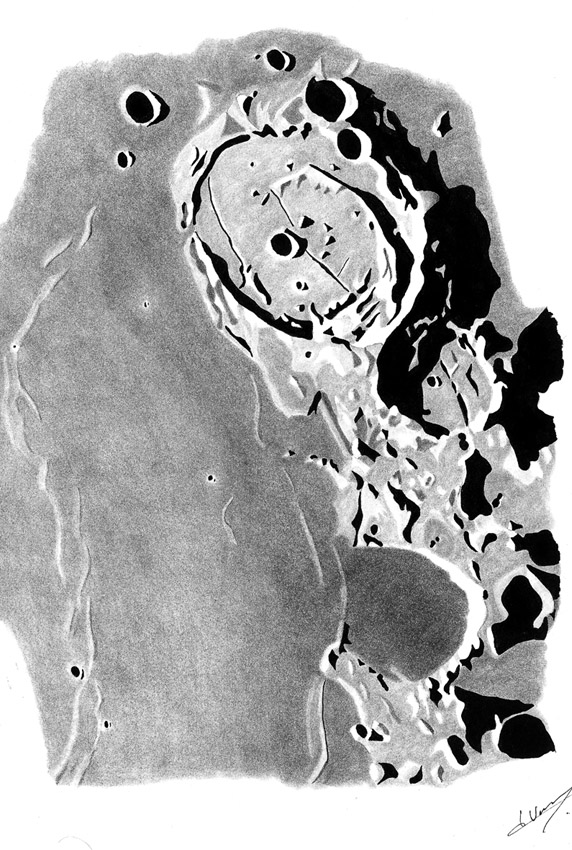drawing by Bernard Nomblot
Imaging the Moon has become a precise art, but the art of drawing the lunar surface remains subjective and emotional - and that is a good thing. I would not trust a drawing to be an accurate depiction of details (although it might be), but I would hope a drawing would evocatively capture the feeling of an observing experience. This one by Bernard does exactly that. When we look through an eyepiece - and especially when we remember such observations - shadows are richly black and the rims catching the Sun are brilliantly white. The details we strain to see, such as the rilles in Posidonius, seem razer sharp (especially in memory) while the rest of the field of view is often schematic. The human eye, brain and hand create a representation with selective emphasis, and a drop off in detail away from the focal point, reaching a white nothingness beyond the area of interest. Pity the poor technofile, whose camera indiscriminately captures everything!
Technical Details:
5 August 2004 with an 8” sct. Bernard writes: I love this kind of slow work, because when drawing you have to look at the moon, not only seeing it. At telescope I work with intensity code: 0 for black, 10 for dazzling white; I redraw the drawing on strong paper with different pencils and china ink for the black.
Related Links:
Rükl plates 14 & 24
My favorite Posidonius image
Yesterday's LPOD: Ring the Bell
Tomorrow's LPOD: Criss-Crossed
COMMENTS?
Register, Log in, and join in the comments.




